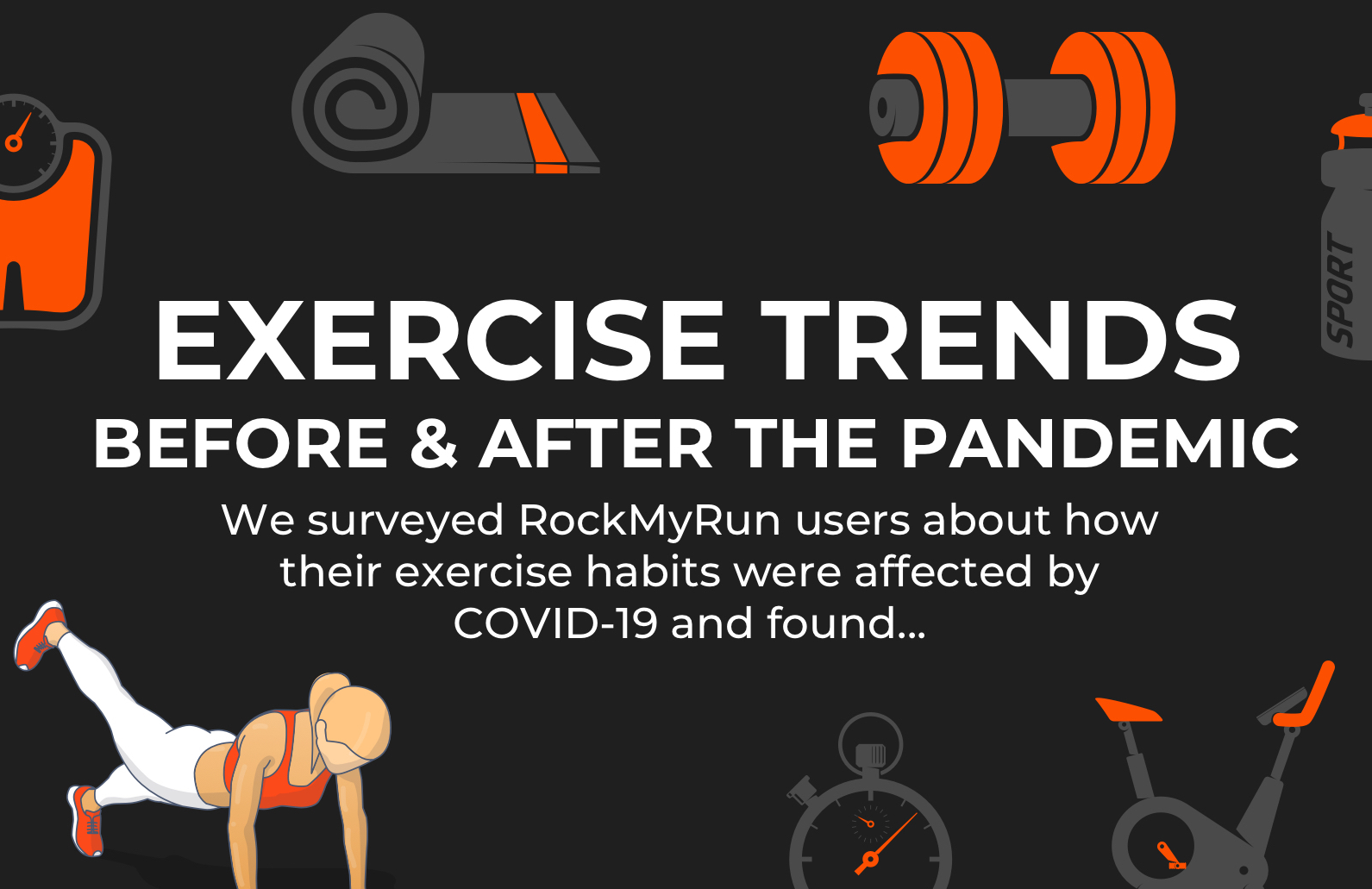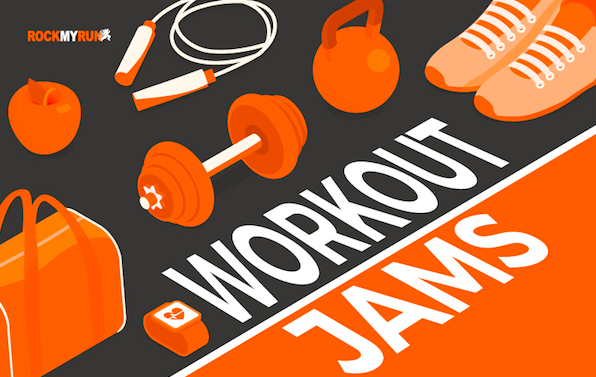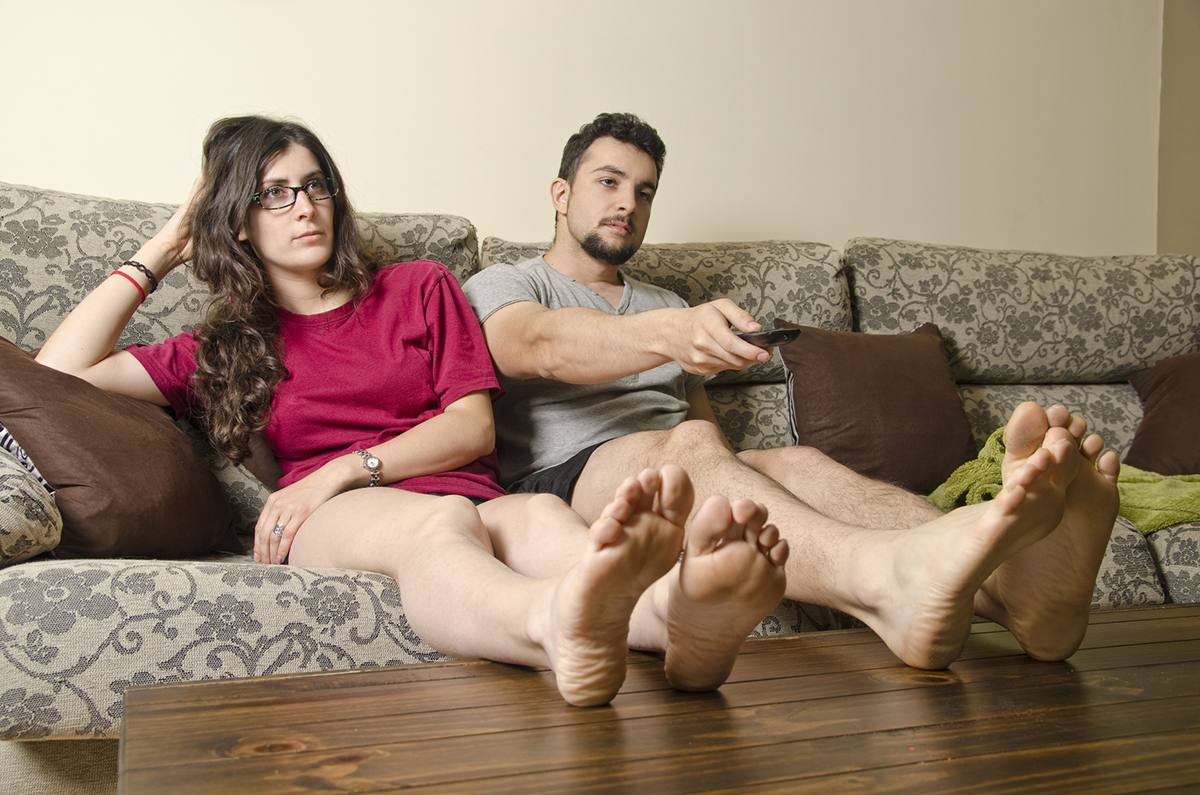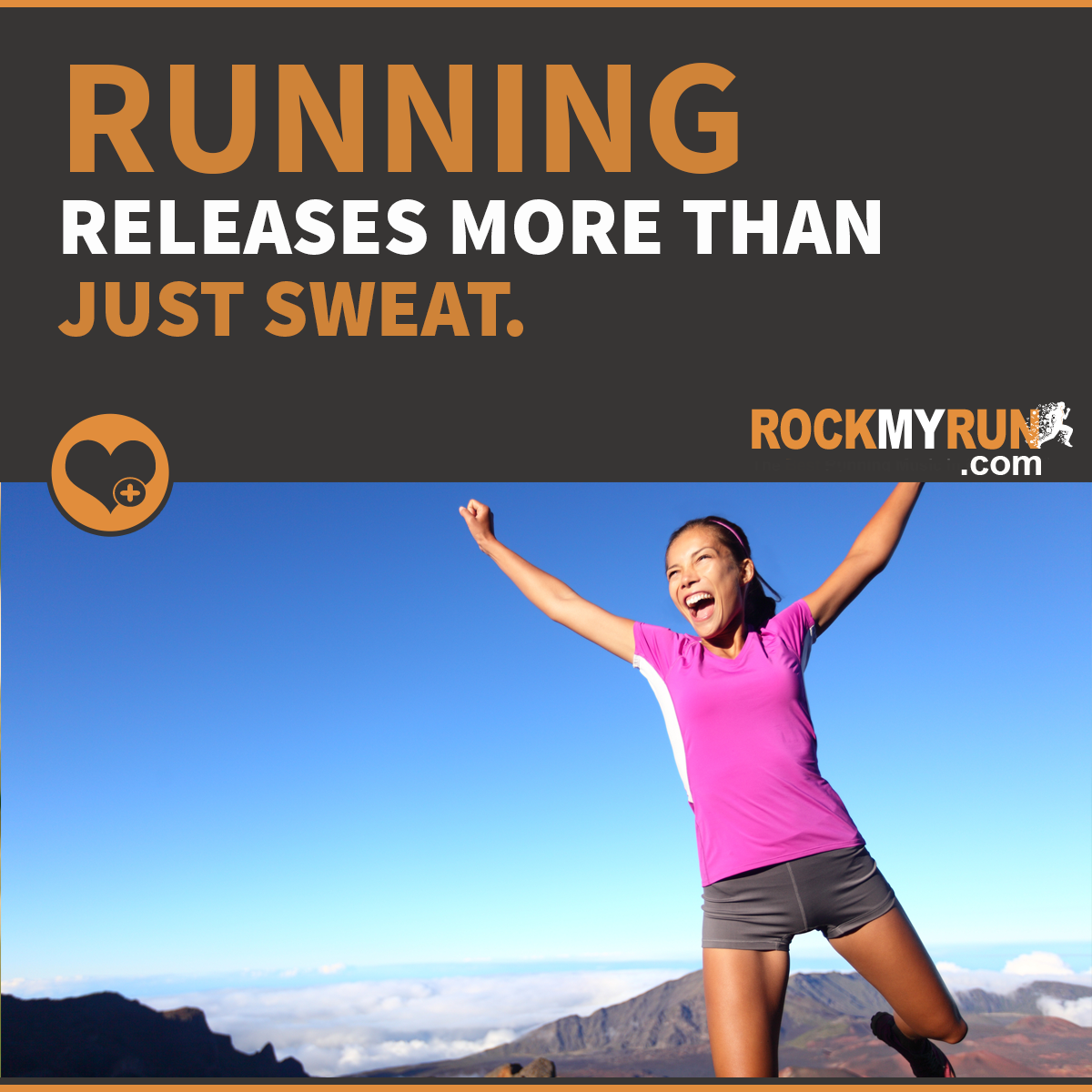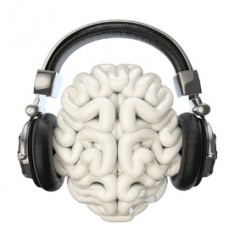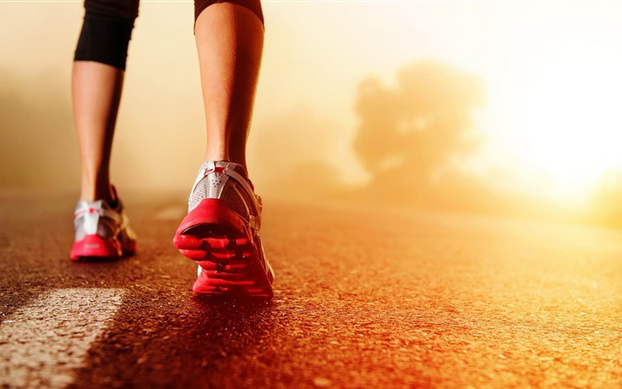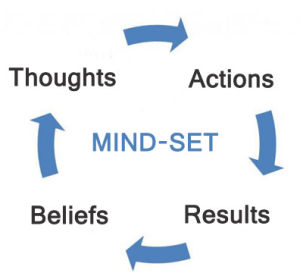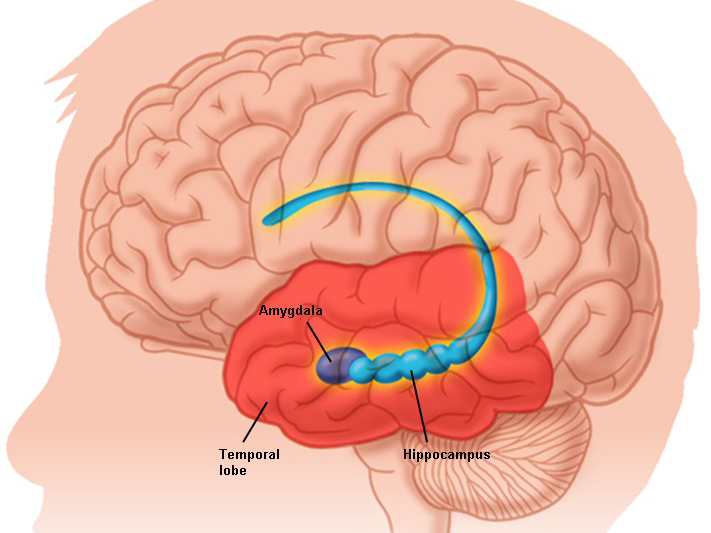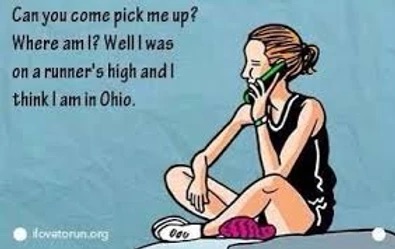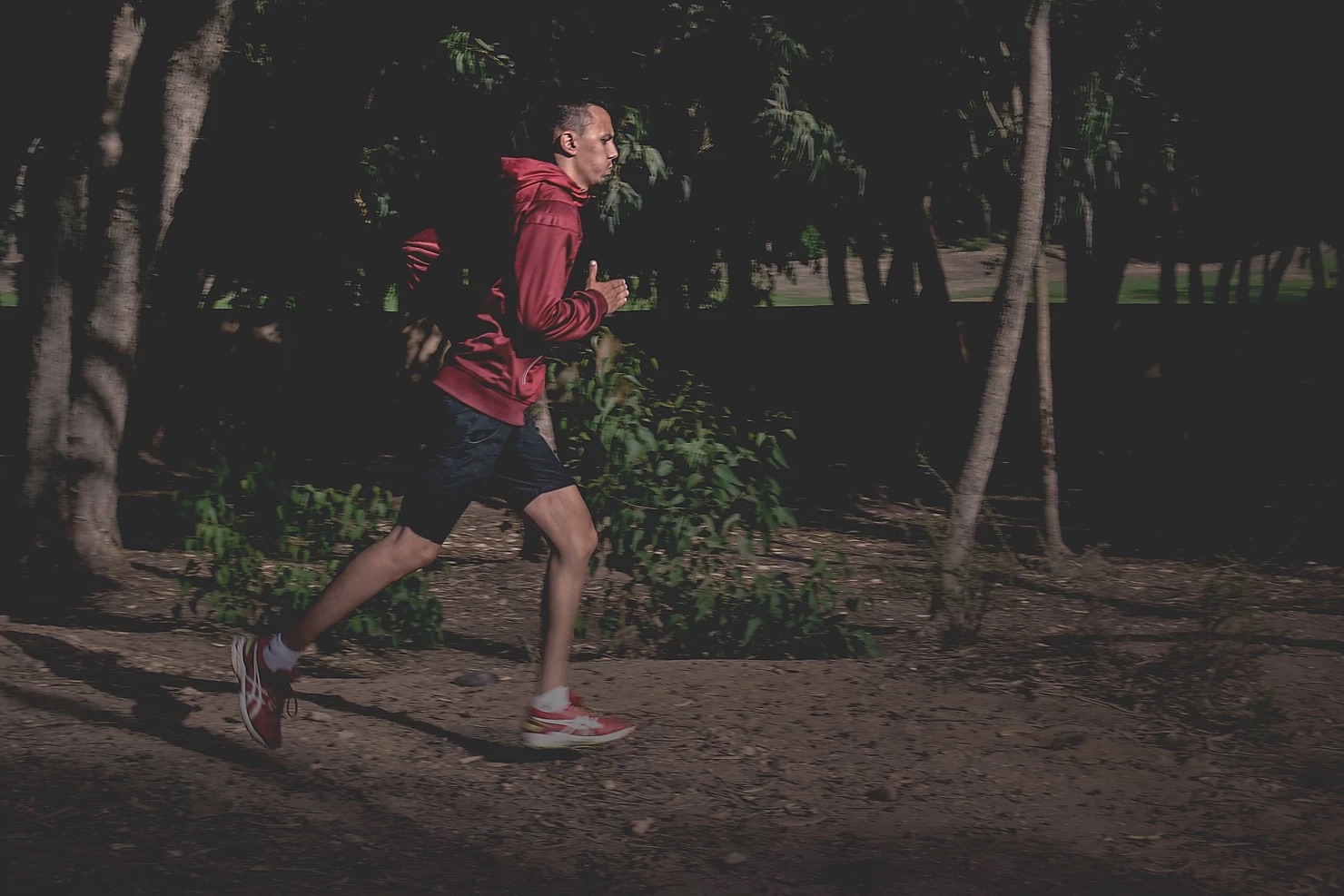· 2 min
Exercise Trends Before and After the Pandemic
It’s been a long and life-changing year, but there is finally a light at the end of the tunnel. With the pandemic (hopefully) coming to an end soon, we were curious… How has the pandemic affected exercise habits? Being a tech company, we wanted to collect data, and who better to ask than our RockMyRun users? Since RockMyRun, a music app for exercise, was created for all fitness levels, we thought this would be a pretty even spread in terms of performance, exercise routine, and regimen. Are you ready for the results? More People Are Working Out from Home This should be no surprise, but since the pandemic began, we saw a significant increase in users working out from their homes. (Home Gym anyone??) What’s interesting is that we saw an even larger increase in people working out from home with guided online videos or virtual coaching. It does make sense, after all. When you can’t get to the gym, you have to do something, and often those online sessions can help you stick to your routine and feel like you actually are at the gym. There was also an increase in running or jogging outside. Who doesn’t love an excuse to get that fresh air! Returning to Their Workout Routines Now that the end of the pandemic is on the horizon and gyms either already have opened, or will open back up soon, who will return to their routine before COVID? We found that just a little under half of those surveyed are itching to get back to how things were before all of the restrictions. So we wondered, with the difference in how people exercise, what exactly will that mean for current activity levels? Will people exercise more after the pandemic? Surprisingly, we found that most people plan on keeping their current activity levels after restrictions lift. That being said, it did appear that many of those interviewed are exercising more than they did before the pandemic, even from home, so they plan on sticking to that new regimen, good job! We also found that 36% of people plan on exercising more once restrictions lift further. Staying Motivated Once Restrictions Lift This pandemic was tough, but for many it was an opportunity to increase their fitness levels and improve their health. If you’re looking for a way to keep your motivation up, give RockMyRun a try! This is a music app that syncs with your body, and is scientifically proven to keep you motivated. We think you’ll love it so much that your first two weeks are free! Try free for 14 Days Full Exercise Infographic Here is the full infographic for you to share, read, and enjoy! Thanks for reading.
· 3 min
The Correlation Between Music and Fitness/Motivation
A new survey of 2,000 Americans who exercise regularly commissioned by RockMyRun (that’s us!) had some interesting findings around the correlation of music and fitness & motivation. Let’s dig in! How Does Music Affect Motivation? Have you ever forgotten your headphones while going on a run or to work out at the gym? How do you feel on those days? Chances are you feel sluggish, slow, and unmotivated. You’re not alone! In this study, it was found that music has a direct affect on motivation while exercising. In fact, 65% of respondents need music during their workout, or they would have no motivation: f you don’t listen to music regularly when you work out, why not give it a try! Who couldn’t use extra motivation? Why do people listen to music while they work out? In addition to motivation, there are other reasons people listen to music while they work out. Here are the top reasons: While motivation is a huge factor in working out, 32% of people primarily listen to music while they work out to boost their mood! An additional 31% of people do so to help them focus, and 19% use it as a distraction from their current workout and physical exertion. How do people feel when they listen to music while working out? We asked respondents for feelings associated with listening to music while working out. These include feeling empowered, strong, and determined among others. Who doesn’t want to feel that way during a workout? Workout Playlists Now that we’ve identified the importance of listening to music during a workout, let’s talk about how people put together their workout playlists! If you like to get to the gym and start working out right away rather than spending hours on making your own playlist, you’re in good company. Out of the people that were surveyed, 39% of people prefer to listen to a premade playlist, while only 7% of people select their own songs while they work out. If you’re looking for premade playlists so you can maximize your time exercising, check out RockMyRun for the ultimate workout playlists! The Best Workout Songs In this survey, we also asked users for their ultimate workout songs, and came up with this awesome top 5 list: You may be pumped and feeling ready to run just by reading that list! Let’s talk about how music affects performance next: The Effect of Music on Performance So we’ve determined that music is important for motivation and mood, but does it actually affect your physical performance? An astounding 68% of people reported an increase in performance if they listen to music while they work out. But there’s an important caveat: If the music contains ads or any type of breaks, 69% report that it will kill their momentum. If you’re currently working out to a music platform that contains ads, you’re doing yourself a disservice and actually decreasing your performance. With RockMyRun you can listen to music non-stop and without having to worry about ads – the only limit to how far you go is how far you want to go! (Try Free for 14 Days) Best Workout Music App Now that you know the benefits of listening to music while working out, it’s time to find the right music app. One that will motivate you, with ready-made playlists, and has no ads. RockMyRun is a music app made specifically for running and exercise. The music is curated by professional DJs for a seamless workout experience with no ads or breaks between songs. The music adapts to your body in real-time through your heart rate or steps, which is scientifically proven to motivate you even more. Ready for the ultimate workout music experience? Try RockMyRun free for 14 days. Did you love this study? Save or share the full infographic!
· 2 min
Sitting: The New Smoking
There is an epidemic of sedentary behavior in America that is having perilous effects on our health and wellbeing. Whether you are someone who meets the recommended guidelines of 30 minutes of moderate to intense exercise five days a week or are just getting started into a fitness routine, too much sitting is associated with an increasing list of health concerns. Let me say it simply: too much sitting can shorten your life. Now, I don’t want to scare you if you’ve been sitting most of the day, but maybe a bit of a shiver will get you up and moving. If you are someone who exercises regularly, but spends more than six hours a day sitting, research shows you may STILL have as large as a 40%-50% greater risk of death over the next 15 years than those who sit for less than three hours a day. A recent study analyzing the results of 18 studies involving 800,000 participants found that comparing people who spent the most time sitting with those who spent the least time, there were increased risk of diabetes (112%), cardiovascular events (147%), death from cardiovascular causes (90%) and death from all causes (49%). Dr Ala Alwan, the World Health Organization’s Assistant Director-General for Noncommunicable Diseases and Mental Health said, “Physical inactivity is the fourth leading risk factor for all global deaths, with 31% of the world’s population not physically active.” The average adult spends 90%of their leisure time sitting down and less than half of adults meet World Health Organization physical activity recommendations. Our bodies are not made for inactivity. Our well-oiled physical structure, driven by the heart as the engine, is made for muscle and bone mobility, stability, agility, coordination, endurance, balance, and strength—not sitting on the couch. What to do if you spend a fair amount of time sitting? Work at a standing desk or treadmill deskWalk or bike to workTake a brief stand up or walking break, up to 10 minutes at least every hourStand at meetings whenever possibleWhen you sit down, sit down then stand up and then sit downWhen you stand up, stand up then sit down and then stand upPark further away from your office, or get off the bus/train/subway a few stops earlierAlways take the stairs, not elevatorsBe an active sitter on a stability ball at your deskKeep the printer away from your desk, perhaps in another officeTake active stretch breaks, push-ups, squats, lunges, reach-and-pulls, twists and turnsKeep stretch bands, light-weights, and other small exercise equipment in your office for lunch breaks “The perils of overwork are slight compared with the dangers of inactivity,” according to Thomas Alva Edison. Boy, did he turn on the lights on this one! Do you spend a lot of time sitting throughout the day? What tips do you have to combat a sedentary lifestyle? Post contributed by Michael R. Mantell, Ph.D. Dr. Mantell has served as a long-time Assistant Clinical Professor in the Department of Psychiatry at the University of California, San Diego and today is the Senior Fitness Consultant for Behavioral Sciences for the American Council on Exercise, a behavioral sciences coach, an author and a national fitness-health speaker.
· 3 min
Why We Run: The Physical and Psychological Benefits
If you are among the 29,478,000 Americans who run or jog 50 or more days a year then you know why you run. Running offers phenomenal psychological and physical benefits and you’ve probably even experienced a “runner’s high.” You must be spreading the word too, since running shoe sales grew to a whopping $3.04 billion in 2012, up 23% from 2011. Slipping on a pair of running shoes is a common way to start the day, along with the ubiquitous headphones popping out of the ears of joggers and runners. Psychological and Physical Benefits of Running So what is this national, indeed international, sensation all about? What do we love about running? Perhaps we love the way we feel. After all, it is well known that the psychological benefits of running rival the physical benefits. Nearly three-quarters of runners who maintain at least a moderate level of fitness say that running keeps them in a positive, relaxed, happy, state of mind. My clients who struggle with depression find that running is a less expensive, highly preferable and equally effective mood booster, than taking side-effect prone medications. Runners report significant increases in the quality of their life, feel greater energy, patience, optimism and ambition. For many, running leads to significantly lower levels of stress, improved memory, increased verbal fluency and better cognitive functioning. Perhaps most importantly, runners report greater health benefits that include burning more calories, heart health, improved HDL cholesterol levels, a boost to the immune system, increases in bone density and improved lung capacity. Runner’s High Then there’s always that “runner’s high.” It’s true, that invincible “what discomfort?” flow that runners feel, tied to a release of endorphins, norepinephrine, dopamine and serotonin, with an increase in body temperature, have been fully demonstrated by endorphin and neuroscience researchers. Want to power up that output? Then you need to introduce yourself to your nucleus accumbens, your prefrontal cortex and your amygdala. These are located in your brain and go into high gear, releasing feel-good chemicals, particularly when music activates these emotion and intellectual centers. Boost Performance with Music Want to boost the impact of running and increase the positive benefits that running brings? Be sure to choose your favorite music mixes and performance enhancing beats per minute to keep you moving along a health-promoting pace. Fitness psychologists, who study the effects of music on athletic performance and exercise, find that listening to music while working out stimulates mental arousal and enhances brain functioning, at least for a short period of time. The key, the researchers tell us, is to choose music you enjoy, and note that the faster the music, the greater the power output. It’s all about the motivating power of the music you choose and how you choose to listen to it. Louder and faster music, according to research, leads to runners dialing up their pace, while slower and quieter music is best for cool downs. Research suggests that the right music can boost endurance by 15%. Furthermore, while exercise promotes good endothelial functioning, so important to your heart and in preventing atherosclerosis, listening to music for 30 or more minutes while running or working out turbocharges that effect on the cells that line the inside of your blood vessels. Next time you hear about a marathon, half marathon, or 5K coming to town, or a buddy asks you to go for a jog at the park, now you know why running has the growth curve it does and why so many love running. It leaves you feeling better head to toe. And with RockMyRun rocking your health benefits, well, it’s hard to imagine anything better putting a smile on your—or your doctor’s–face! Why do you run? What are your favorite benefits? Let me know in the comments below. Post contributed by Michael R. Mantell, Ph.D. Dr. Mantell has served as a long-time Assistant Clinical Professor in the Department of Psychiatry at the University of California, San Diego and today is the Senior Fitness Consultant for Behavioral Sciences for the American Council on Exercise, a behavioral sciences coach, an author and a national fitness-health speaker.
· 2 min
Music…The Legal Performance Enhancing Drug
Did you know that the leading expert about the psychology of exercise and music, Dr. Costas Karageorghis, calls music the “legal performance enhancing drug” of fitness and exercise? There have been a large number of studies about the effects of music on athletic performance since 1911 and these are the key findings: Music promotes emotional and physiological arousal.Music reduces fatigue, especially at moderate levels of exercise, by distracting us from our physical awareness.Music turbocharges our mind’s focus on performance and muscle memory and as the beat of music increases, power output and exercise intensity increases for mild to moderate ranges of exercise.Music improves our motor coordination as we move to the rhythm.Music relaxes us as a result of dampening byproduct molecules associated with high levels of exercise. Workout Music Enhances Performance & Motivation Research studies have shown that music can enhance performance, motivation and reduce exertion. Researchers first found that cyclists pedaled faster when a band was playing than when there was no music. A more recent study found that people who cycled to music required 7% less oxygen to do the same work as cyclists who didn’t synchronize their pedaling. Another study found that swimmers with music got a 10% boost in motivation and a full 3-second improvement in performance. So why wouldn’t you want to do everything you could to enhance your workout? Beats per Minute for Workout Music No matter what genre you like, the most common rhythm is about 120 beats per minute (BPM). Power walkers report enjoying 137-139 BPM, runners about 147-169 BPM, and cyclists about 135-170 BPM. However, the BPM you choose for an activity depends on your mood and purpose for your workout. Moving to synchronous music with a clear and steady beat can boost your performance by up to 15%, while listening to relaxing music, called asynchronous music, can reduce tension as much as 10%. Music Tied to Memory Music opens the floodgates of memories and emotions, working on the auditory – motor brain connection, so it’s important to have total control over what you listen to when you workout. This covers the internal and external elements of music’s impact on exercise—our heart and our mind. Find Music for Your Next Workout To enhance your performance and motivation, find the right music for your next workout. With RockMyRun, you can choose the right tempo and genre for your music from more than one hundred music mixes by professional DJs. Once you’ve found the right beat for you, get ready for an added dose of enhanced performance. Post contributed by Michael R. Mantell, Ph.D. Dr. Mantell has served as a long-time Assistant Clinical Professor in the Department of Psychiatry at the University of California, San Diego and today is the Senior Fitness Consultant for Behavioral Sciences for the American Council on Exercise, a behavioral sciences coach, an author and a national fitness-health speaker.
· 3 min
Ask The Fitness Psych: Morning vs. Night Runs and Pre-Race Mental Tips
In the first installment of the RockMyRun ‘Ask The Fitness Psych’ blog series, fitness, sports and health behavior science coach Dr. Michael Mantell answers questions from RunRockers! Is it better to run in the morning or at night? – RunRocker Bree Here’s the simple answer: whenever you can enjoy it the most. That said, there are some technical and physiological considerations to keep in mind. The best time to exercise, including running, is when your body temperature reaches a peak and your muscles are most supple, commonly in the late afternoon. Early morning runners enjoy the motivational jolt it gives the day, despite the fact that it’s not considered the best from a physiological perspective—stiff muscles and low body temperature don’t make for an easily executed run. If you are training for a race, which most often gets started early in the day, it’s a great idea to run in the morning to be prepared for the big “ready, set, GO.” While running at the end of a workday can be a mental challenge, there is research that suggests there is an increase in lung function and peak performance later in the day, making the run surprisingly easier to do. I’m relatively new to racing (obstacle/road). I’m having a hard time getting psyched up. Then I have trouble settling my nerves. Do you have any pre- race techniques I could use? –RunRocker Sean “The will to win means nothing without the will to prepare.” -Juma Ikangaa, 1989 NYC Marathon winner I’ll offer you a number of tips to get yourself mentally ready to settle your nerves and avoid any mentally created obstacles. Rehearse the race before you cross the start line. This requires you to plan out your speed, stride, step and pace.Be sure you’ve accustomed yourself to the course you are going to run. This will help decide when to use associative or dissociative thinking style along the path, especially as you break the run down into segments.Plan your thoughts across the run in advance. Associative thoughts are about your bodily sensations and self-talk. Dissociative thinking is used to distract you from fatigue, such as music, counting, fantasizing, people watching. Associative thinking is typically connected to faster running times, and used at key times during a race to propel the runner, while dissociative thinking is often switched to when fatigue and pain set in.Self-talk is not always a bad thing. What are you telling yourself or predicting before you start? Make sure to encourage yourself and not predict in your mind obstacles that don’t exist.Goals? Focus on process goals, not the outcome. Compare and despair at your own risk. It’s not an “all or nothing” run. Run without expectations except to meet your goals along the way.Stay physically relaxed using deep and slow breathing and use mind-body internal reflections to scan your body for tension to be released once you find it. Visualize the race using all senses – see yourself running, image what people look like along the way and watch yourself crossing the finish line in good spirits. Michael R. Mantell, Ph.D. has served as a long-time Assistant Clinical Professor in the Department of Psychiatry at the University of California, San Diego and today is the Senior Fitness Consultant for Behavioral Sciences for the American Council on Exercise, a behavioral sciences coach, an author and a national fitness-health speaker. In 2013, Greatist.com named Dr. Mantell as one of “The 100 Most Influential People in Health and Fitness.”
· 4 min
Ready, Set, THINK!
Does this sound familiar? You are about to start a marathon, Ironman race, tennis match or basketball league game, and all you keep thinking about is that you “must be the best.” By the time you get to the start of your competition you are so filled with anxiety and pressure, that you feel frozen and have to force your way into your competition. That’s where self-talk—the internal conversation that constantly runs through your head—comes in as a barrier or boost to your performance. In the above example, self-talk is obviously a barrier. Your performance hinges almost entirely on your thoughts, expectations, self-talk and mental focus, assuming a certain level of skill. It’s been estimated that humans have anywhere from 15,000 to 70,000 thoughts per day. The diagram below shows how these thoughts impact us. Our self-talk includes all of these beliefs and thoughts—whether focused, random, positive, negative or neutral—that run through our minds every day. They tell us what to do, where to focus our energies, and can be key sources of positive motivation. However, they can also be totally demotivating. It’s not “if” we have these thoughts, but rather we “do” have these thoughts – our task is to keep them rational, realistic, accurate and logical, in order to enhance our performance in sports and in life. Often, athletes incorrectly focus on the past or future: “I was so bad in practice, I’ll do really bad in this upcoming event.” They focus on weaknesses while in an event: “Darn, I started too slow.” They focus on outcome goals instead of process goals: “ I MUST come in first!” They focus on uncontrollable elements: “I can’t stand that there are so many people watching me run.” Last, and worst, they often demand perfection: “My time MUST be perfect.” So here you are in your most comfortable running shoes, listening to your favorite RockMyRun mix, with your friends cheering you on, and you realize that you are frozen and having to force your performance. Enter thought stopping. With thought stopping you become aware of your self-talk and are able to manage it. The steps to do this are: 1) catch it, put the cover on the cage of that parrot that keeps chirping negative, inaccurate thoughts in your head, 2) challenge and check it, replace it with accurate, positive thoughts instead, 3) change it. Catch it, check it, change it. The key is to stop your negative thoughts and change them to positive ones, then to use cue words to control your awareness if you happen to start down the negative self-talk path. Keep in mind that the link is what you think when it comes to performance in athletics, and in life. What you tell yourself becomes your reality. Tell yourself you are too tired to go for a run or hit the gym, and guess what? You’ll start to yawn. Research at the University of Kent in Canterbury, England, published in the Medicine and Science in Sports and Exercise this past fall, demonstrated this principle with cyclists. In the study, one group was taught to engage in positive self-talk while pedaling to near exhaustion, with phrases such as, “You’re doing well” or “I’m feeling good.” The researchers discovered that positive, accurate self-talk bolstered the cyclists’ feelings, made pedaling feel easier, and improved performance by enabling them to pedal longer, despite physiological measures showing the same high levels of physical exertion as their initial ride before learning positive, accurate self-talk. This study is the first to demonstrate that self-talk significantly reduces the rating of perceived exertion and enhances endurance performance. Physical exhaustion develops in your head. Using the right combination of positive and accurate self-talk, as well as repeating the phrases consistently or even on a schedule, is motivating and improves endurance performance, compared to not using it, according to the researchers. The findings illustrate that psychobiological interventions, specifically self-talk, designed to target favorable changes in perception of effort, are beneficial to endurance performance. Next time you go for a run, enter a competition or just hit the gym for a routine workout, be sure your laces are tied and your thoughts are tight too. Post contributed by Michael R. Mantell, Ph.D. Dr. Mantell has served as a long-time Assistant Clinical Professor in the Department of Psychiatry at the University of California, San Diego and today is the Senior Fitness Consultant for Behavioral Sciences for the American Council on Exercise, a behavioral sciences coach, an author and a national fitness-health speaker. In 2013, Greatist.com named Dr. Mantell as one of “The 100 Most Influential People in Health and Fitness.”
· 4 min
Are You What You Listen To?
When it comes to psychology, there’s no shortage of ways to describe and understand personality. Open to experience, extroverted, agreeable, conscientious, emotionally stable, quiet and serious, enthusiastic, original, direct, cautious, inspirational, steady…you get the idea. And it seems that knowing something about the type of music one prefers may be an effective window into understanding some types of personality. Of course, you can give someone a cumbersome personality test, but that’s not nearly as much fun as peeking into someone’s iPod, as a way of getting to know someone, is it? How Does Your Brain React to Music?Before you start scrolling through your buddy’s playlist, it might be useful to look at what brain function studies tell us about the brain. You see, there is science behind it all. Our brain’s motor cortex is involved in movement, foot tapping, and dancing while our amygdala is involved with our emotional reactions to music. Our sensory cortex provides us with tactile feedback from playing an instrument or dancing, and our auditory complex gives us the perception and analysis of tones. Finally, our hippocampus is involved in our being able to recall and have memory for music. How is Music Tied to Personality?Now, of course you aren’t going to ask that person you are interested in getting to know to fill out a personality assessment or take a quick jog over to the nearest ER for a brain scan. You can read body language, make some judgment about their physical appearance, groom and clothing style. But a psychological study of primarily younger-aged subjects found that the most popular topic that same- and opposite-sex pairings talk about is music, followed by books, movies, TV, football and clothing (Rentfrow and Gosling, 2006). In the study, musical preferences demonstrated reasonably accurate abilities in conveying some aspects of personality. Many theories are given as to why people prefer one genre of music over another. Some find one type of music leaves them feeling relaxed, while other use specific genres of music to pump them up. Some listen to one genre over another because they believe it helps them identify with a group or promotes a certain self-identity. Our brain’s motor cortex, amygdala, sensory cortex, auditory cortex and hippocampus are all part of our physiological responsiveness. Not all personality traits are easy to identify through musical preference. For instance, openness to experience, extraversion and emotional stability are the easiest to guess correctly. On the other hand, music preferences don’t seem to say much about whether a person is conscientious or not. What Does Your Favorite Music Say About Your Personality?As for specifics, the research found some surprising and perhaps even debatable results. Extraverts seem to prefer vocals, while country music with all of its heartache is a preference among the most emotionally stable and hard-working. If jazz is pouring out of those headphones, it’s likely an intellectual with high self-esteem, who’s creative, outgoing and often at ease, may be listening. Rap fans were found to have high self-esteem and be outgoing, while dance fans were found to be creative, outgoing and not particularly gentle. Pop music aficionados are often filled with high self-esteem, are deemed to be hard-working, outgoing and gentle, but not typically creative or at ease. Finally, rock/heavy metal fans were found to have lower self-esteem, to be creative and to be at ease people, as well as not hard-working, not especially outgoing and frequently gentle. Of course there are exceptions to these, and all research findings. But the data does indicate that different types of musical genre preferences can be helpful in sorting out some basic personality types. Music Background With Different Genres and Types At the same time, different music genres have different tempos which impact behavior, especially when exercising. Therefore, the tempo one prefers may not necessarily be related to personality but to an effect one wants while running or working out in the gym. Whether you tune in music to relax you, build focus, drown out fatigue, block distractions, set a romantic mood, or pump you up to get moving on the track or to knock down your to-do list, sharing the type of music you choose and/or the bpm’s may be giving off signals about you. And that could just be about the best thing you could do if you want to reach out to that interesting looking person sitting next to you at the coffee shop, on the plane, in the student center or at the gym. What’s your favorite genre of music? Do you think it aligns with your personality traits? Let me know in the comments below. Post contributed by Michael R. Mantell, Ph.D. Dr. Mantell has served as a long-time Assistant Clinical Professor in the Department of Psychiatry at the University of California, San Diego and today is the Senior Fitness Consultant for Behavioral Sciences for the American Council on Exercise, a behavioral sciences coach, an author and a national fitness-health speaker. In 2013, Greatist.com named Dr. Mantell as one of “The 100 Most Influential People in Health and Fitness.”
· 4 min
Ready to be Happy?
You spend your time exercising, eating well, reading everything you can about health and wellness, meditate, visualize, swallow magnets to attract positivity in your life, listen to the right music. If that’s not someone focused on maximizing happiness in life, I don’t know who would be. That said, even with all of these “right” things people do, I see several missed opportunities for people to fully achieve happiness—and corresponding well being and health. Here are my top five tips that can lead to improved happiness and satisfaction with life: Work consistently to create, cultivate and capture positive emotions throughout the day. Everything that we feel is created through our mind’s work. Our greatest contests become our greatest teachers in our daily lives. Our minds are powerful, vibrating magnets attracting to it that which precisely corresponds to the thoughts and feelings we give out. Positive emotion is the bedrock of happiness so we would be wise to eliminate our negative beliefs and programming and work incessantly at creating positive thoughts and emotions. Laugh more and create that positive vibration.Be fully engaged, in the “flow” of life, work and/or a hobby. Martin Seligman, Ph.D. author of , noted that flourishing in life is in part about getting lost in space in the depths of an activity. It’s good for the soul, life satisfaction and creates happiness and well being. Another positive psychologist, Mihaly Csikszentmihalyi (“Cheek-sent-me-hi”) wrote a book entitled , defined flow as the secret of finding happiness. It’s when your attention is so freely invested in something that you are totally focused on it, you feel a sense of exhilaration, a deep sense of enjoyment, and your body or mind is stretched to the limit in a voluntary way. These are not passive times, not receptive and not even necessarily relaxing, yet we cherish them and they become landmarks in our lives.Build sustaining, close and positive relationships. Human life is about connecting with people. We are hard-wired for it. People with strong social connections have diminished risks for illness and increased longevity, lowered risks for depression, suicide and substance abuse and to paraphrase Lissa Rankin in her New York Times bestseller, , loneliness doesn’t keep the doctor away. Ever notice that when you eat alone you are more likely to binge, eat fewer veggies and eat meals that aren’t as healthy? Living alone is bad for your heart, your immunity, and your mind. Want to predict how happy someone is or how long he/she will live? Find out about his/her social relationships. Caring for others is often more helpful than receiving help yourself. Go out and volunteer. Connect with others!Find meaning in life. There is a growing body of research that has reported on the relationship between health and happiness and religion or spirituality. I’ll add from my own practice, that people who see the larger meaning in life, who see life as larger than their own personal existence, report far less stress and anxiety. At the very least, the sense of being connected to something larger provides an emotional safety net that offers comfort in stormy times.Appreciate your accomplishments. Eleanor Roosevelt said, “When you cease to make a contribution, you begin to die.” Contributing to life is one thing. Appreciating what you contribute turbo-charges happiness and wellbeing. Recognizing your accomplishments, regardless of how large or small, will help challenge negative thoughts about feeling undeserving, not being worthwhile or being a loser altogether. Listing five accomplishments each day, large or small, for which you have gratitude in being able to have done, will immunize you against negativity, fear, uncertainty and vulnerability. Ready to be happy? Ready to increase your satisfaction with life? Ready to increase your feelings of wellbeing? Sure go out for a run, hit the gym, eat well, and listen to terrific music. But also keep these five tips in mind, so those activities provide you all of the good you are hoping for. Add these habits on top of those healthy lifestyle behaviors and you’ll make 2014 your best year yet. Do you have any tips to add to my list that improve your happiness? Post contributed by Michael R. Mantell, Ph.D. Dr. Mantell has served as a long-time Assistant Clinical Professor in the Department of Psychiatry at the University of California, San Diego and today is the Senior Fitness Consultant for Behavioral Sciences for the American Council on Exercise, a behavioral sciences coach, an author and a national fitness-health speaker. In 2013, Greatist.com named Dr. Mantell as one of “The 100 Most Influential People in Health and Fitness.”
· 4 min
Whose Run Is It?
There’s a time to compete and there’s a time not to. Most of the time, it’s the time not to, yet people are constantly competing against others and themselves. While there is nothing wrong with wanting to do better, many people fall into the trap of competing against themselves and using negativity, labels and name calling, and personal put-downs. Striving to improve from a place of self-acceptance and comfort with who you are is one thing. Criticizing yourself because you aren’t the fastest, don’t have the enough medals or aren’t on the cover of the magazines, that’s another. Leon Festinger carefully looked into this style of thinking in 1954 and called it, “social comparison theory.” Simply, this means that people have an innate propensity to evaluate their skills and performances and often compare themselves to others when there is not objective feedback available. But this comparison is a distraction at best. At worst, it leaves us feeling like we are failures, convinces us that we are fixed in our abilities and predicts futures of poor performance. Thus, instead of understanding that the run you are on is yours, not anyone else’s, you are constantly trying to be someone you aren’t. That’s not healthy. It’s been said that at 20, we worry about what others think of us and at 40, we don’t care what others think of us. As someone who has passed 60, my friends and I now realize that nobody was thinking about us to begin with. They were running their own run while we were busy trying to run theirs. My father, uncle and grandfather had shoe stores when I was growing up. I worked in them from the time I was seven years old. One day, my grandfather brought me outside to teach me an important lesson. He pointed at the competitor down the street. The owner was standing in front of his store watching the people come into our family’s store and walking out with bags of shoes. “Michael,” my grandfather told me, “You see what that guy is doing? He’s watching our store instead of his own. He’s angry that nobody is buying shoes from him. He’s too busy taking care of OUR business instead of his own. When you grow up, run your own store, and don’t watch anyone else’s.” Sure there is a time to compete. Running in a race? You are competing to win. But those times are rare in life. Stay away from constantly competing, delete those who push you to be something you aren’t and run your own run, live in your own home, drive your own car, wear your own running shoes, and run your own store—don’t watch anyone else’s. You’ll fail for sure. Here’s how I coach athletes, business leaders and everyday folks who suffer from their own compare and despair thinking: Who are you? What’s unique about you that makes you different than anyone else? What’s that voice inside telling you who you are? Be sure you are fully aware, self-accepting, and completely content with the answer to that question. Focus on being the best YOU, not a second rate someone else.What’s it take for you to unfold, reveal and unpack the genuine, authentic you? Run your run the way you want to. I saw someone in the gym recently copying every move I made with a set of dumbbells, including the amount I was lifting. He was trying to lift my dumbbells, not his. Not smart, right? He needed to lift his own dumbbells, the way his body and muscles and strength permitted, not the way mine did for him.Don’t DIE. Huh? That means, don’t Demand, Insist and Expect that YOUR performance be better or even match the person with whom you are running.Hear the fixed beliefs you have about yourself, understand you have a choice as to how you think about yourself in relationship to others when you put on your running shoes, challenge and then replace those thoughts that leave you thinking negative about yourself and your performances.Enjoy your run. Your own run. Michael R. Mantell, Ph.D. has served as an Assistant Clinical Professor in the Department of Psychiatry at the University of California, San Diego and as the Senior Fitness Consultant for Behavioral Sciences for the American Council on Exercise. He is a behavioral sciences coach and consultant, an Advisor to many fitness and health organizations, a member of the Scientific Advisory Board of the International Council on Active Aging, the Chief Consultant for Behavior Sciences for the Premier Fitness Camp at Omni La Costa, a presenter for Rancho La Puerta, a best-selling author and an international fitness-health speaker. In 2013, named Dr. Mantell as one of “The 100 Most Influential People in Health and Fitness.”
· 2 min
Ask The Fitness Psych: How to Run in Heat and Humidity
In the RockMyRun ‘Ask The Fitness Psych’ blog series, we have fitness, sports and health behavior science coach Dr. Michael Mantell answer questions from RunRockers! Hello! I live in Costa Rica. We do not have Summer, Winter or Fall we just have rainy season or summer season. Right now is rainy season here and it is sunny and moist during the morning and rainy (a lot) during the afternoon. I usually go out for training at 5:00 pm or 6:00 pm and temperature is perfect at that time (not hot neither too cold). I’ll have a race soon and it’ll start at 8:00 am. I bet it will be sunny and terribly humid. What can I do to prepare my self to those conditions? – RunRocker S. Running in Costa Rica with its challenging mountains, forests and beaches, can be a terrific experience. Then again, heat, humidity and rain, can be a bothersome factor for some. Some runners handle these weather conditions better than others, of course. And the fact is, we can’t always run in 50 degree, light wind, overcast weather. Keep this in mind. When you run in any conditions, your body temperature increases as a natural accommodation, which cause your sweat glands to produce, well, sweat. In most conditions, the sweat on your skin vaporizes and disappears. In humid weather, your sweat glands will produce sweat but the sweat won’t evaporate. This may lead to dehydration, impaired blood flow, escalating heart rate by about 12-15 beats per minute or more as the temp goes from the 70’s to the 90’s, and cognitive difficulties including dizziness and disorientation. Be aware of these indicators of humidity exhaustion, and of course take a rest, hydrate and recuperate. I suggest you don’t only drink water, but include water-rich fruits and veggies as well. What you wear can also help. Be sure the clothing you wear is made of micro-fiber, high-tech, sweat-wicking material. Light colors will reflect heat better than dark colors. Don’t forget your neck and head, so a visor is important. In preparing for for a humid run, don’t focus so much on your regular pacing at first, and instead learn to identify the early signs of humidity exhaustion. Given enough time for preparation, watching your hydration, you’ll have time to focus on the pacing and emerge victorious. Good luck in your race! Michael R. Mantell, Ph.D. has served as an Assistant Clinical Professor in the Department of Psychiatry at the University of California, San Diego and as the Senior Fitness Consultant for Behavioral Sciences for the American Council on Exercise. He is a behavioral sciences coach and consultant, an Advisor to many fitness and health organizations, a member of the Scientific Advisory Board of the International Council on Active Aging, the Chief Consultant for Behavior Sciences for the Premier Fitness Camp at Omni La Costa, a presenter for Rancho La Puerta, a best-selling author and an international fitness-health speaker. In 2013, named Dr. Mantell as one of “The 100 Most Influential People in Health and Fitness.”
· 4 min
Ask The Fitness Psych: The Elusive Runner’s High
In the RockMyRun ‘Ask The Fitness Psych’ blog series, we have fitness, sports and health behavior science coach Dr. Michael Mantell answer questions from RunRockers! I run because I like feeling healthy, because it’s good for me, and because I like the feeling of accomplishment. But I so often hear about people who “love” running and can’t wait to hit the trails or track. Do they simply get a bigger rush of endorphins than I do? Or are they more addicted or responsive to the endorphins than I am? I feel like I’m missing something. Running is hard work….I can’t say that I “love” it or crave doing it. I’d take the couch any day and it takes willpower to run multiple times a week. I am proud of my willpower despite the fact that I don’t love any of the exercise I do. – RunRocker Connie What a great series of questions, Connie! Thanks for asking… First, let’s talk about the good old “runner’s high” that results from endorphins produced during a run. These neurotransmitters are released by the pituitary gland, and “feel good” motivational little devils that they are they actually find a way of attaching to two areas of the brain that leave that goofy smile on our faces – the prefrontal cortex and the limbic area. Guess what, Connie? Those friends who “love” running and can’t wait to hit the trails? It’s because those endorphins are finding their way to the very same areas of the brain (the limbic and prefrontal cortex areas) that are stimulated when we are involved in romance or are listening to great music! So YES, your friends do “love the love” they feel from running. The interesting thing about these love chemicals is that their effects increase with routine. Get into a running routine and you’ll be rewarded with lots of “love” like your friends, and even more, with optimal health. I agree about the “hard work” you find in running, and thus not craving it. However, if want to fall in love with that love feeling, try following these steps: Stop focusing on what’s wrong with running—how hard it’s been, how boring it’s been, how you haven’t loved it. Get the focus off the past. Forget goal setting…that’s right! I said it. Instead of goals, focus on intentionality, the planned actions you need to find a way to run, not the intended outcomes of running. Goals are about the future and may or may not happen. Intentions are about the present and what you actually do. Implementation intentions trump simple goals. Start as slow and as brief as you’d like. A quick five-minute jog or a quicker paced around-the-block run to get you going, will be like a first date. Check it out and see if you’ll accept a second date. Make sure it’s a fun first date—think of a cool way to enjoy the experience, no matter how brief it is. Consider a run buddy, as running friends are always helpful for keeping you going. Especially if it’s someone who is a bit—just a bit—more into the love than you are. Don’t try to keep up with an experienced full-fledged run lover. Let yourself fall in love. Don’t fight it. Love the process of your run. Feel those endorphins? Track them, journal them and be mindfully aware of that feeling you get. Want to turbocharge it all? Be sure your choice of music (or mix on RockMyRun!) is the right music and that it gets your heart beating and puts you in the mood for love. Then let your endorphins do their work. These five steps cover all of the key behavior science behind loving to run, or any exercise, and creating that internal motivation you see in your friends. There is no magic in running a course, or lifting a dumbbell, or swinging a kettlebell or hanging on a TRX. These are simply activities. “The link is what you think” and these five steps will help turn your mindset around, and get you no longer feeling like you are missing something, but rather, feeling the love you see in your friends faces. Michael R. Mantell, Ph.D. has served as an Assistant Clinical Professor in the Department of Psychiatry at the University of California, San Diego and as the Senior Fitness Consultant for Behavioral Sciences for the American Council on Exercise. He is a behavioral sciences coach and consultant, an Advisor to many fitness and health organizations, a member of the Scientific Advisory Board of the International Council on Active Aging, the Chief Consultant for Behavior Sciences for the Premier Fitness Camp at Omni La Costa, a presenter for Rancho La Puerta, a best-selling author and an international fitness-health speaker. In 2013, named Dr. Mantell as one of “The 100 Most Influential People in Health and Fitness.”
· 5 min
4 Mental Barriers and How to Avoid Them On Race Day
“Nothing can stop the man with the right mental attitude from achieving his goal; nothing on earth can help the man with the wrong mental attitude.” Thomas Jefferson offered this observation and it’s as relevant to mental preparation for a race as it is to any endeavor in life. The key is planning. No matter how well you plan, prepare for a race or physically train, without being entirely convinced that you are as ready as you can possibly be for whatever comes up on race day, your motivation, confidence, focus and physical abilities to handle the psychological demands of the race will let you down. Properly engaged mental focus will give you the added fuel of positive emotion, which is the fuel to get out there and compete…and complete. Here are the top 4 mental barriers that I’ve found derail performance on competition day—even if that competition is simply against the track you are running on: 1. Motivation is only external What’s the real reason you are running? Is it to satisfy yourself, to elevate your status, to increase your fame or wealth? Are you running because you love the sport and its challenges? Are your parents, spouse, friends, co-workers pushing in helpful or destructive ways? Have you set smart goals for yourself or are you borrowing someone else’s? If all your motivation comes from external (rather than internal) sources, you won’t develop and adhere to your physical and mental preparation plans. 2. Talking yourself into anxiety Are you convincing yourself that you “can’t win…finish…do well”? Perhaps you need more positive self-talk. In addition to realizing your actual progress during training and healthy support from others, you must avoid “all or nothing” self-talk and thinking, as well as avoid confusing your past performances with expectations for future performances. Anxiety is simply predicting the future with gloom and doom, so focus on relaxation, deep breathing, music, and avoid dire predictions of “horrible” results—you really can’t predict the future anyway. Common phrases in your self-talk along the way are often very motivating: “Good job…it’s not that much further…almost on the downhill side…not long before the stadium filled with my friends pops up.” 3. Intrusions Ever try to NOT think about the “Pink Elephant”? The reason you can’t is because first you have to think about it in order to NOT think about it. Distractions come almost entirely from irrational, ungrounded worry. You compare yourself to your competitors, focus on irrelevant details concerning you, anticipate conditions that may not be present on race day, and erroneously believe that if you think about them then you can control them. Here’s where visualization, mental imagery and posted reminders in your gym bag, can all help. Mentally go through an entire race from waking up on race day and see what you will eat, how you warm up, all the way to the finish line. Go through the event in a positive way and rehearse every step: swim, T1, bike, T2, run and finish. Break the big picture into little pieces to keep focused on your goals, instead of irrelevant distractions. 4. Deficient training The wrong coach, an undisciplined or unstructured training program, preparing for the wrong conditions and improper nutritive planning, all lead to being poorly prepared. A lack of mental preparation includes not detailing out and planning your desired goals. What mindset do you visualize for yourself throughout the race? In an Ironman for example, it’s common for the human mind to give in to despair somewhere between 60-90 miles of the biking portion of the race. Preparing in advance for how you will re-think and deal with it (these thoughts normally pass at about 100 miles, so hang in!), will turn this seeming crisis into an expected challenge you are prepared to handle. Detailed goal setting, positive and rational self-talk, mental imagery, familiarity with the course, relaxation methods, concentration, focus skills to avoid distractions, are all are a part of complete mental preparation. What’s The Fix? OMP These three letters are Optimal Mental Performance. The optimal mindset is central to your success performance. It builds self-confidence, helps you control your mental energy throughout the race course, provides focus on the essential elements of your competition, and creates a sense of familiarity as you move through, in reality, what you’ve rehearsed so many times, in imagery. Begin with the end in mind as you prepare yourself for a big event. How will you need to think and feel to do your best? That’s the key—striving to do your best. What is the right “mindset” to achieve this goal? How do you see yourself feeling and thinking at the start line? What are you focusing on that jettisons you towards doing your best? You might want to compare your previous best and worst performances to see how the answers to these questions change. What does your optimal mindset look, sound and feel like? What cue words do you hear in your optimal mental self-talk? What do you need to do to be mentally and physically ready along the race from warm-up to finish? As you rehearse, listen to yourself positively comment on your progress as you pass landmarks you’ve “seen” in your mental imagery. These strategy rehearsal tips will help you with energy management, and the mental and physical challenges during the race and in post-race recovery. Michael R. Mantell, Ph.D. has served as an Assistant Clinical Professor in the Department of Psychiatry at the University of California, San Diego and as the Senior Fitness Consultant for Behavioral Sciences for the American Council on Exercise. He is a behavioral sciences coach and consultant, an Advisor to many fitness and health organizations, a member of the Scientific Advisory Board of the International Council on Active Aging, the Chief Consultant for Behavior Sciences for the Premier Fitness Camp at Omni La Costa, a presenter for Rancho La Puerta, a best-selling author and an international fitness-health speaker. In 2013, named Dr. Mantell as one of “The 100 Most Influential People in Health and Fitness.”
· 3 min
Duration, Speed or Frequency In Exercise May Not Matter
So you’ve decided it is time to lace up those running shoes and hit the trail, treadmill or track. Your friends have convinced you to shoot for a goal of a steady state 45-60 minute run and you believe that sounds about right. The only problem is that you’d actually be wrong in believing that you need to go on a “long distance” run to optimize your health. You don’t! At least according to the latest observational study involving data collected from 55,000 adult runners. While running generally leads to a 30 percent reduction in the risk of premature death and a 45 percent reduction in the risk of cardiovascular death, those benefits are the same regardless of speed, duration or frequency of running. That’s right. Whether you run five or ten minutes a day or much longer, you’ll experience the same reduction in death risk, leading to a three-year increase in your life expectancy! Here’s what Iowa State University’s College of Human Sciences professor, and lead author of this study, Duck-chul Lee, said: “The (World Health Organization) guidelines recommend at least 75 minutes per week of vigorous aerobic activity such as running… However, we found mortality benefits in runners who ran even as little as 30 to 60 minutes per week. You see, long-distance endurance runs are not always better. For so many Americans who think in all or nothing terms (“either I run for an hour or more at a time or I’m a loser”) there’s no real need to exercise for more than 30-45 minutes at a time, IF you exercise efficiently and effectively. Like so much in life, more is not always better. In fact, too much exercise may lead to serious heart damage through oxidative stress and inflammation as well as plaque formation. Further there is the possibility of increased risk of injury with microscopic tissue tears, too much cortisol (stress hormone) being released, sleep difficulties and weakening of your immune system. For what it’s worth, the Canadian Cardiovascular Congress in 2010 found that consistent exercise can reduce cardiovascular risk three-fold, but prolonged endurance running actually increases cardiovascular risk seven-fold! Study after study tells us about the benefits of shorter duration high intensity interval training (HIIT), that include a proper stretching warm-up, then short all-out sprints followed by periods of slower jogging or walking, for six to eight cycles, ending with a proper cool down and stretching. Reductions in body fat, improvements in insulin sensitivity, blood sugar regulation, and aerobic power have all been found in shorter sessions of these interval runs. Get started slowly, yes, with properly fitted running shoes. Strive for reasonable and flexible goals that reduce, not increase, your risk of injury. After all, isn’t that what running, indeed, all fitness activities are about—optimizing your health and longevity? Remember it’s not the duration, speed or frequency of your run. It’s that you run that matters. Michael R. Mantell, Ph.D. has served as an Assistant Clinical Professor in the Department of Psychiatry at the University of California, San Diego and as the Senior Fitness Consultant for Behavioral Sciences for the American Council on Exercise. He is a behavioral sciences coach and consultant, an Advisor to many fitness and health organizations, a member of the Scientific Advisory Board of the International Council on Active Aging, the Chief Consultant for Behavior Sciences for the Premier Fitness Camp at Omni La Costa, a presenter for Rancho La Puerta, a best-selling author and an international fitness-health speaker. In 2013, named Dr. Mantell as one of “The 100 Most Influential People in Health and Fitness.”
